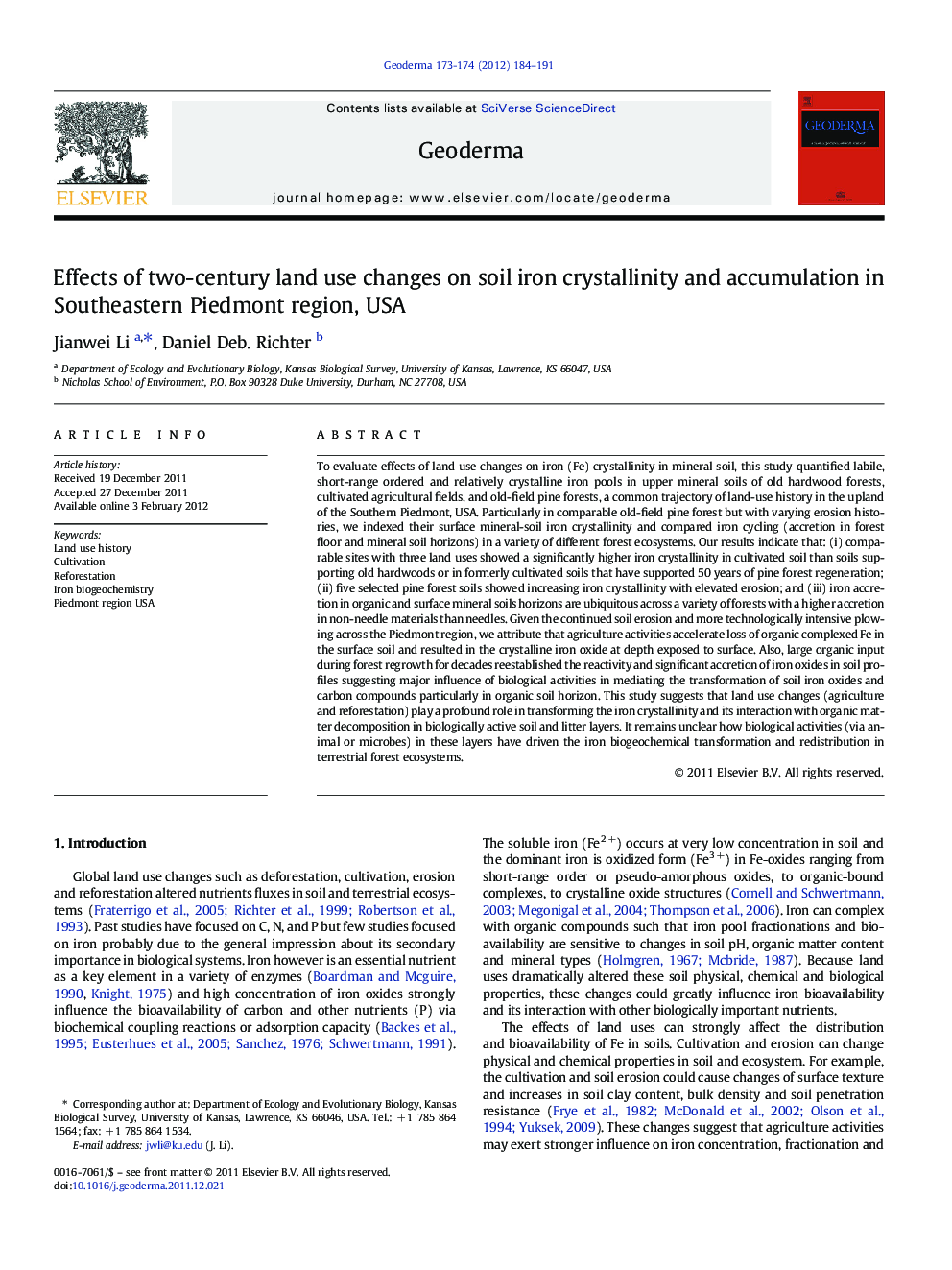| Article ID | Journal | Published Year | Pages | File Type |
|---|---|---|---|---|
| 4573948 | Geoderma | 2012 | 8 Pages |
To evaluate effects of land use changes on iron (Fe) crystallinity in mineral soil, this study quantified labile, short-range ordered and relatively crystalline iron pools in upper mineral soils of old hardwood forests, cultivated agricultural fields, and old-field pine forests, a common trajectory of land-use history in the upland of the Southern Piedmont, USA. Particularly in comparable old-field pine forest but with varying erosion histories, we indexed their surface mineral-soil iron crystallinity and compared iron cycling (accretion in forest floor and mineral soil horizons) in a variety of different forest ecosystems. Our results indicate that: (i) comparable sites with three land uses showed a significantly higher iron crystallinity in cultivated soil than soils supporting old hardwoods or in formerly cultivated soils that have supported 50 years of pine forest regeneration; (ii) five selected pine forest soils showed increasing iron crystallinity with elevated erosion; and (iii) iron accretion in organic and surface mineral soils horizons are ubiquitous across a variety of forests with a higher accretion in non-needle materials than needles. Given the continued soil erosion and more technologically intensive plowing across the Piedmont region, we attribute that agriculture activities accelerate loss of organic complexed Fe in the surface soil and resulted in the crystalline iron oxide at depth exposed to surface. Also, large organic input during forest regrowth for decades reestablished the reactivity and significant accretion of iron oxides in soil profiles suggesting major influence of biological activities in mediating the transformation of soil iron oxides and carbon compounds particularly in organic soil horizon. This study suggests that land use changes (agriculture and reforestation) play a profound role in transforming the iron crystallinity and its interaction with organic matter decomposition in biologically active soil and litter layers. It remains unclear how biological activities (via animal or microbes) in these layers have driven the iron biogeochemical transformation and redistribution in terrestrial forest ecosystems.
► We examine soil iron crystallinity and accumulation in three land uses. ► Cultivated soils are more crystalline attributable to erosion and plowing effects. ► Iron accumulates in forest organic and upper mineral soil horizons. ► Organo complexation with soil iron oxides is mediated by biological activities.
